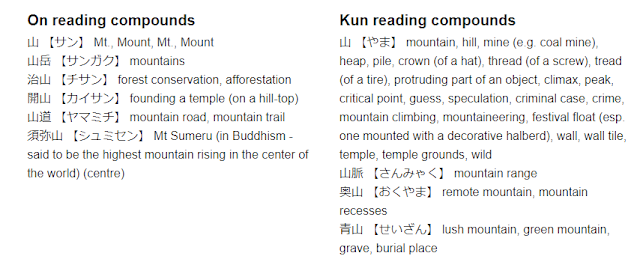Japanese is a peculiar language compared to those I've learned. There is a lot to it and if you think you're going to master it easily, you're kidding yourself. I've now been in immersion class for about a month - it's been an interesting ride. The first thing I and almost everyone else learns is the Hiragana alphabet. Using this alphabet, you can, in theory, write Japanese. You're expected to learn this on your own before you start a Japanese class. I learned it about a year and a half ago and this has made the transition to class a lot easier. With Hiragana, you could, for example write "kuruma" which means "car." It looks like this: くるま。Hiragana is pretty straightforward, Japanese is spelled like it sounds.

Next up is the second alphabet called Katakana. This alphabet is used specifically to spell out foreign loan words. Generally speaking, if you see something written in Katakana, it means it's a foreign language word, usually English, that has been transmuted into Japanese. It is confusing because it is not always a direct translation or it has been shortened. A good example of this is the word for supermarket, which is written as スーパー.It sounds like SU-PAHH, and it the shortened version of "super." Another example is the word for "part-time job" which is アルバイト and sounds like A-RU-BYE-TO and comes from the German "arbeit." It takes quite a while to get used to reading Katakana since the loan words are not always English and even when they are, they're shortened and/ or pronounced differently. Again, you are expected to come into class with Katakana under your belt.
If learning Japanese were likened to a calendar year, then the learning of these two alphabets probably gets you to 2am on Jan 1st. The New Year's party isn't even over yet. The next hurdle is the sentence structure. The verb comes last. It is really difficult to get your mind to make this switch if you're used to a romance language. A simple sentence like "I went to the store yesterday" becomes I yesterday to the store went. This is for me, the single hardest thing about Japanese. After a month, I can do it relatively easily when writing, but I stutter when speaking, looking up at the ceiling a lot with my eyes rolled into my head.
Once you're relatively comfortable with Hiragana, Katakana and sentence structure they start adding in Kanji. This is like treading water in the ocean and being asked to catch an anvil. The Japanese borrowed Kanji from the Chinese, it arrived in Japan around 500 AD. To that point, Japanese was not a written language, so the Kanji had to be shoehorned in. Not only did they borrow the kanji itself, but they also sometimes took the Chinese pronunciation (or pronunciations) of the kanji while preserving their own Japanese pronunciations. As a result, for each Kanji there is a Chinese and Japanese pronunciation (or more likely multiple pronunciations of each.) The Chinese pronunciation is called the On reading and the Japanese the Kun reading. To make it all work, they also created Hiragana, which is added to the Kanji to mimic the Japanese sounds. 
Of course, this makes learning Japanese extremely tough, since a single kanji, such as the one that means "mountain" can be pronounced multiple ways and can mean many different things depending upon whether there are other kanji on the right or left of it or whether there is hiragana with it. Having studied a bit of Chinese, I feel that Japanese is slightly easier since the kanji usually have hiragana and you can sound out the hiragana and make a guess, though that works about as often as it fails. There is no shortcut to Kanji, you have to drill over and over and memorize. Writing kanji is interesting as well since you must draw them in a specific stroke order which probably mattered when the ancients were using ink and brush. Even now, however, the stroke order is sacred. The teachers stand behind you as you practice and correct you if you do the strokes out of order.
It would help a lot if the words were separated by spaces, but nope, not the case. Japanese writing goes from top to bottom, right to left. There is not a single space between anything. This is a typical piece of writing with a mix of kanji, hiragana and katakana. It takes a bit of getting used to and I am not there yet.
Next, both nouns and adjectives are conjugated as you normally would do with only verbs in English. They're conjugated slightly differently and nothing like how verbs are. Oh, did I fail to mention that there are polite tenses and familiar tenses to be used depending on the situation? Yes, they are different for verbs, nouns and adjectives. You can get used to all of this, you really can. You sit in class every day for five hours hearing nothing but Japanese, using nothing but Japanese and it all starts to come, whether it makes sense or not. But almost every week there is something weird or quirky. Recently we just learned that some colors such as white, black and red are nouns while other colors are adjectives. I raised my hand "why is this so?" The teacher just smiled and answered me. "It just is."




No comments:
Post a Comment